No products in the cart.
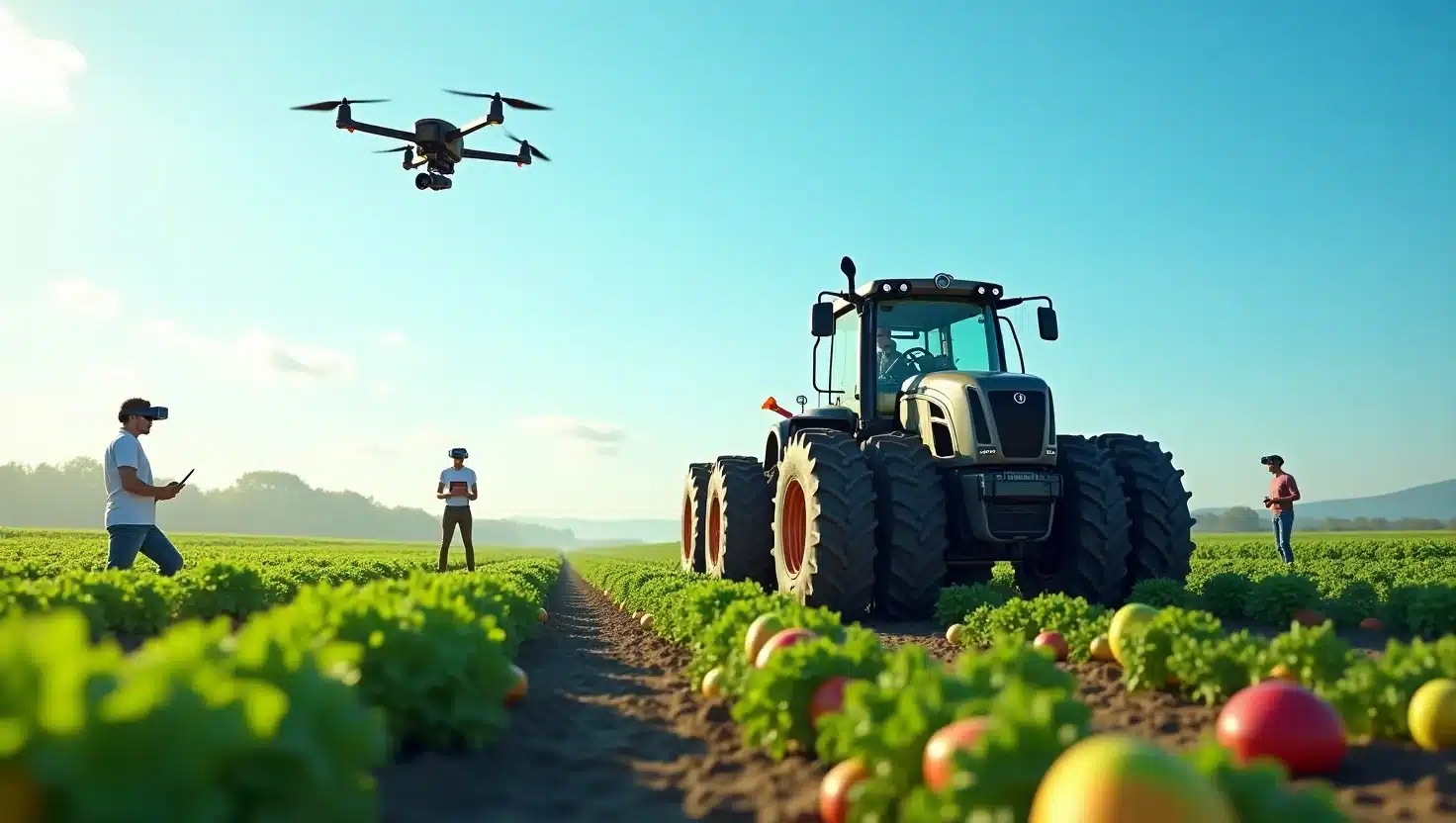
1. Introduction:
As the global population continues to climb and climate challenges intensify, the world’s food production systems are under immense pressure. Traditional farming methods, while reliable for generations, are no longer enough to meet the growing demand for food in a sustainable and efficient way. This is where the convergence of AI in agriculture and AI in AgTech comes into play—ushering in a new era of intelligent farming.
Artificial Intelligence (AI) is revolutionizing industries across the board, but its impact on agriculture is especially profound. From autonomous tractors to drone-powered crop surveillance and AI-driven yield predictions, the future of farming is being reshaped one algorithm at a time. Farmers today are no longer relying solely on intuition; they’re turning to data—collected through sensors, satellites, and smart devices—to make precise, real-time decisions.
This transformation isn’t just about automation. It’s about empowering farmers with tools that enhance productivity, reduce waste, conserve resources, and increase crop quality—all while responding to changing environmental conditions. Whether it’s detecting early signs of disease or optimizing irrigation schedules, AI is helping farmers work smarter, not harder.
The term AgTech—short for Agricultural Technology—refers to the suite of innovations driving this shift. And at the heart of AgTech lies AI, enabling everything from predictive analytics to robotics and intelligent supply chain management.
In this article, we’ll explore how AI is being applied across various stages of food production—from pre-harvest soil analysis to post-harvest food safety. We’ll break down its core benefits, emerging trends, challenges, and what the future might hold. Whether you’re a farmer, a tech enthusiast, or just curious about where your food comes from, understanding the role of AI in AgTech has never been more relevant.
2. What is AgTech and Why AI Matters?
At its core, AgTech, or Agricultural Technology, is about using innovation to improve the way we grow, manage, and distribute food. It combines traditional farming wisdom with cutting-edge tools like drones, sensors, robotics, and, most significantly, Artificial Intelligence (AI). AgTech aims to make farming more efficient, productive, and sustainable—something that’s becoming essential as we face global challenges like food insecurity, climate change, and limited natural resources.
But why is AI in AgTech such a big deal?
Unlike conventional tools, AI can analyze vast amounts of agricultural data in real time. It processes inputs from various sources—such as satellite images, soil sensors, and weather forecasts—to offer actionable insights. This means farmers can make smarter decisions about when to plant, how much to irrigate, or which crops are at risk of disease before problems get out of hand.
Take AI-powered crop monitoring, for example. Instead of walking through fields to spot issues manually, farmers can now use drones and image recognition software to detect crop stress, nutrient deficiencies, or pests. Similarly, AI in soil analysis can determine optimal fertilizer use, reducing waste and boosting productivity.
AI also plays a major role in precision agriculture—a farming approach that tailors treatment to specific parts of a field rather than using a one-size-fits-all method. This helps conserve resources like water and pesticides while maximizing yield.
In short, AI isn’t just enhancing AgTech—it’s transforming it. From small farms to industrial-scale operations, AI is enabling a new level of precision, scalability, and sustainability. As we move forward, integrating AI into agricultural practices will be key to feeding the world—efficiently, intelligently, and responsibly.
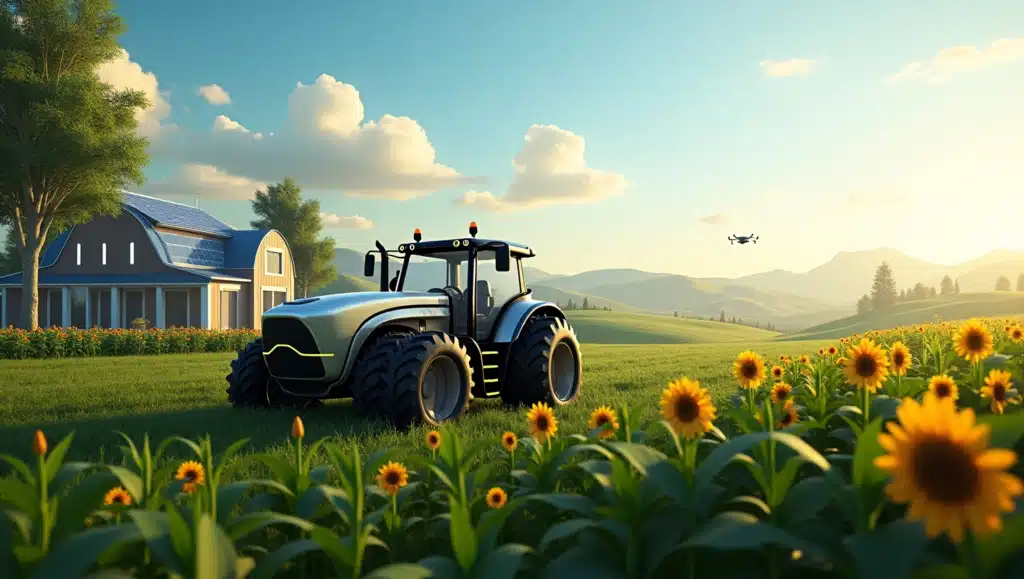
3. Core Applications of AI in Food Production
Artificial Intelligence is reshaping agriculture from the ground up—literally. It plays a pivotal role at every stage of food production, helping farmers optimize processes, reduce resource waste, and increase yields. Let’s explore how AI in AgTech is being applied in real-world farming scenarios.
3.1 AI-Powered Crop Monitoring and Management
One of the most widely used applications of AI in agriculture is crop monitoring. Using computer vision and drone imagery, AI systems can detect early signs of plant stress, disease, or pest infestation. This enables farmers to act before problems escalate, improving crop health and reducing the need for excessive chemical treatments.
3.2 Smart Irrigation Systems
Water management is a major concern in agriculture. AI helps solve this by analyzing data from soil moisture sensors, weather forecasts, and crop types to create smart irrigation schedules. These systems deliver the right amount of water at the right time, reducing waste and conserving water—especially critical in drought-prone regions.
3.3 AI in Pest Detection and Control
AI models can identify pest activity with high precision using image recognition and predictive algorithms. This allows for targeted pesticide application, minimizing environmental impact and operational costs while safeguarding crops.
3.4 Robotics and Automation
Autonomous machines equipped with AI, such as self-driving tractors, robotic weeders, and harvesters, are now taking on labor-intensive tasks. These machines work faster and longer than human labor, increasing efficiency and consistency in farming operations.
3.5 Yield Prediction and Forecasting
AI systems analyze historical data, climate conditions, and real-time sensor inputs to predict crop yields with remarkable accuracy. This helps farmers and distributors better plan harvests, pricing, and logistics.
From planting to harvesting, AI in food production is not just a support tool—it’s becoming the engine that drives modern agriculture forward.
4. AI in Food Processing and Distribution
While AI is making waves in fields and greenhouses, its impact doesn’t stop at the farm gate. AI in food processing and distribution is revolutionizing how food is handled, packaged, transported, and even protected. From factory floors to supermarket shelves, artificial intelligence ensures that food reaches consumers faster, fresher, and safer.
4.1 AI in Sorting and Quality Control
In food processing plants, AI-powered machines are now capable of sorting produce based on size, color, ripeness, and even surface defects. Using computer vision and machine learning, these systems can inspect thousands of items per minute with a level of accuracy that human eyes can’t match. This means better quality products and less waste.
4.2 Predictive Maintenance in Processing Facilities
AI systems also monitor equipment health in real-time. Through sensor data, they can predict when a machine might fail or need servicing—reducing unexpected downtime and improving productivity. This predictive maintenance approach is a game-changer for high-volume operations.
4.3 AI in Food Supply Chain Logistics
When it comes to distribution, AI shines in supply chain optimization. Algorithms analyze traffic data, weather conditions, inventory levels, and historical delivery patterns to determine the most efficient routes and timing. This not only cuts fuel costs but also ensures fresher deliveries.
4.4 Food Traceability and Safety
Consumers today want to know where their food comes from. AI, combined with blockchain technology, is enabling real-time food traceability. From farm to fork, stakeholders can track produce across the supply chain—identifying contamination sources quickly and improving food safety.
The use of AI in food logistics and processing isn’t just about automation—it’s about making the entire food system smarter, safer, and more sustainable. As demand grows, so will AI’s role in shaping a more resilient and transparent supply chain.
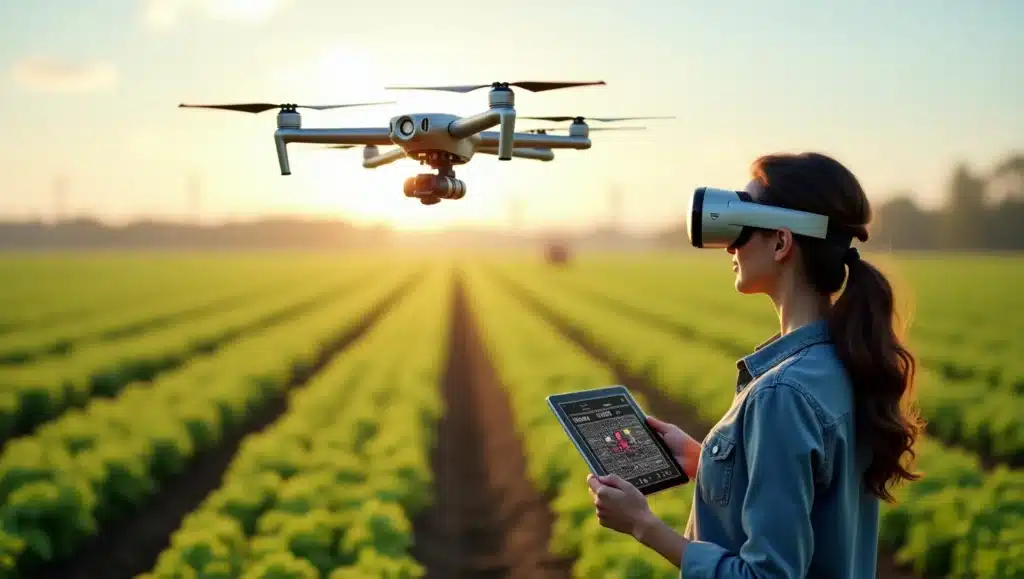
5. Benefits and Limitations of AI in AgTech
Artificial Intelligence is undeniably transforming agriculture, but like any powerful tool, it comes with both opportunities and challenges. Understanding the benefits and limitations of AI in AgTech helps paint a realistic picture of its role in the future of farming.
5.1 Key Benefits of AI in AgTech
1. Increased Productivity:
AI enables precision farming—meaning crops get exactly what they need, when they need it. This results in higher yields, better resource use, and less guesswork.
2. Cost Reduction:
AI automates tasks like planting, irrigation, pest detection, and harvesting, significantly lowering labor costs and reducing waste. Over time, this can lead to huge savings, especially for large-scale operations.
3. Improved Decision-Making:
AI platforms use real-time data to guide farming decisions—from when to plant to how much water or fertilizer to apply. These insights reduce errors and improve crop health.
4. Sustainability:
By optimizing resource use, AI helps conserve water, reduce chemical usage, and lower the carbon footprint of farming. It also contributes to more sustainable land use and biodiversity.
5.2 Limitations and Challenges
1. High Initial Investment:
Many AI tools require expensive hardware (like drones or sensors) and software. For small-scale farmers, these upfront costs can be a major barrier.
2. Technical Skill Gaps:
Adopting AI often requires training in data analytics, tech maintenance, and system integration—skills that aren’t always accessible to rural farmers.
3. Data Privacy and Security:
AI systems collect massive amounts of data. Ensuring that this data is used responsibly and stored securely is still a growing concern in the industry.
AI in AgTech holds immense promise, but it’s not a one-size-fits-all solution. Success depends on smart implementation, supportive infrastructure, and ongoing innovation.
6. Future Outlook: What’s Next for AI in Food Production?
As artificial intelligence continues to evolve, so too does its potential to reshape the global food system. From climate resilience to global food security, the future of AI in food production is bright—and full of innovation.
6.1 Predictive and Prescriptive Farming
The next generation of AI tools won’t just analyze data—they’ll predict future scenarios and offer actionable recommendations. By factoring in real-time weather, soil conditions, and market trends, AI will help farmers make proactive, not reactive, decisions.
Imagine AI telling a farmer: “Delay planting by two days for better yield”—that’s where prescriptive farming is heading.
6.2 AI + IoT + Blockchain
We’ll see deeper integration of AI with IoT (Internet of Things) and blockchain. Smart sensors will collect hyper-local data, which AI will analyze instantly, while blockchain ensures transparency across the food chain. This trio can dramatically improve food traceability, safety, and consumer trust.
6.3 Climate-Smart Agriculture
AI will be instrumental in helping farmers adapt to climate change. It can recommend drought-resistant crops, optimize water use in dry areas, and simulate climate impacts on yield. These tools will be critical for ensuring climate-resilient agriculture in the decades to come.
6.4 Personalized Nutrition and Farming
AI might soon connect farms directly with consumer health data. Think of food being produced based on real-time nutritional demand, minimizing food waste and maximizing health impact—a huge leap toward personalized agriculture.
The future of AI in AgTech isn’t just about smarter farms—it’s about a smarter food ecosystem. As adoption grows and tech becomes more accessible, we’re likely to see a world where food is grown more efficiently, distributed more fairly, and consumed more responsibly.
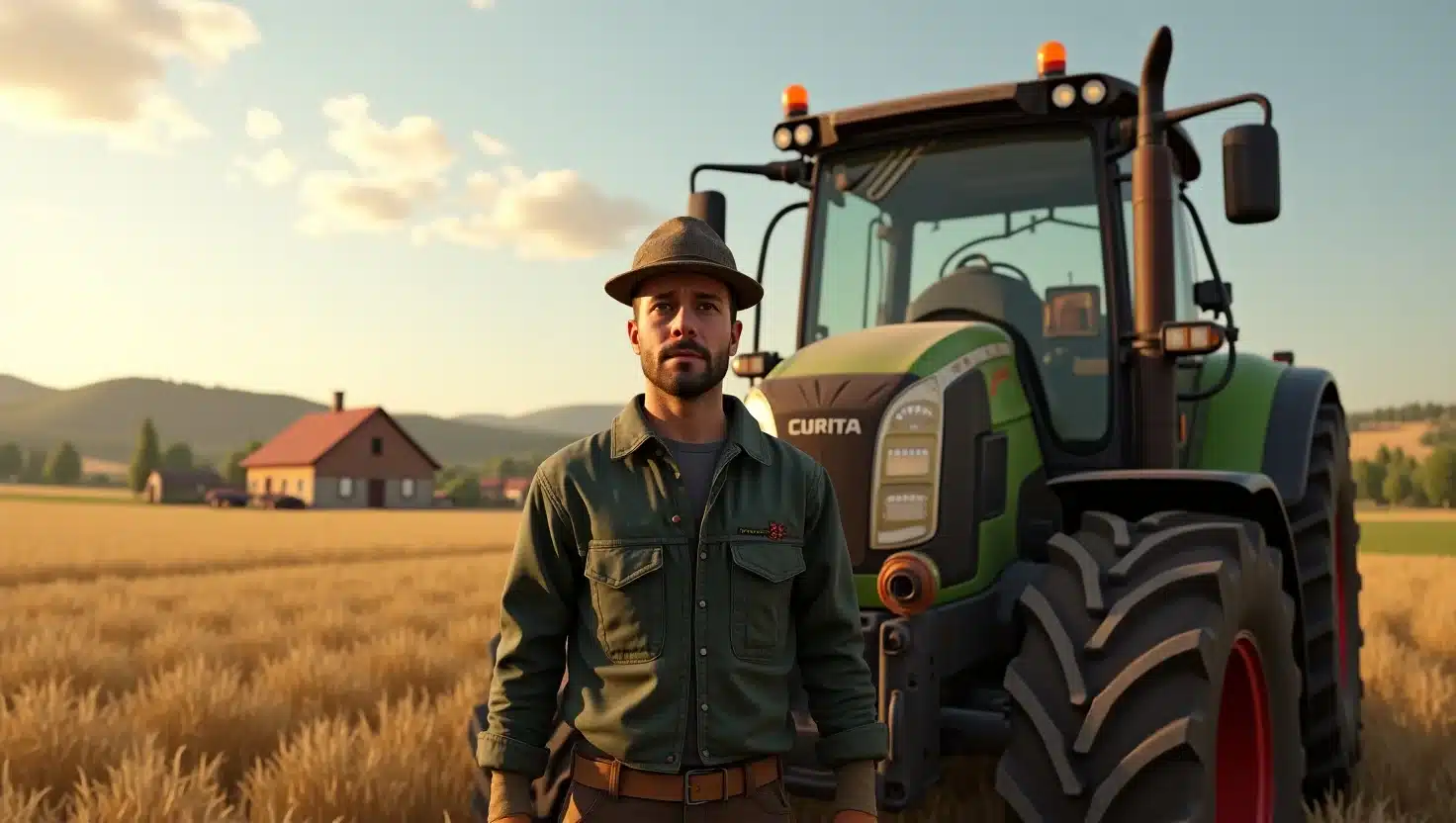
7. Conclusion & Call to Action
The intersection of AI and AgTech marks one of the most exciting shifts in modern agriculture. From increasing crop yields to improving food safety, artificial intelligence is redefining how we grow, process, and distribute food across the globe. It’s not just about automation—it’s about creating intelligent systems that can adapt, learn, and help farmers make better decisions every step of the way.
Whether it’s a drone scanning fields for signs of disease, a smart irrigation system conserving water, or an algorithm predicting next season’s harvest, AI in food production is already delivering real-world benefits. But as we’ve seen, it’s not without its challenges. High costs, technical skill gaps, and data concerns must be addressed to ensure that the benefits of AI reach all farmers—big and small.
Looking ahead, the future of farming will be more connected, data-driven, and sustainable. With continued innovation and support from both the public and private sectors, AI has the potential to solve some of agriculture’s toughest problems—from climate change to food insecurity.
Now is the time to act. If you’re a farmer, consider exploring accessible AI-powered tools for your operations. If you’re an AgTech enthusiast or business leader, think about how you can support innovation that makes AI more inclusive and scalable. And if you’re simply curious, start by learning how technology is shaping the future of your food.
💡 Explore more on our blog to dive into specific tools, real-world case studies, and practical guides that make AI in AgTech easy to understand—and even easier to adopt. Together, we can cultivate a smarter, more sustainable future—one field at a time.
FAQs:
Q1. How is AI transforming agriculture and food production?
AI is revolutionizing agriculture by enabling precision farming techniques. Through data analysis and machine learning, AI helps in monitoring crop health, predicting yields, and optimizing resource usage, leading to increased efficiency and sustainability in food production.
Q2. What are the benefits of using AI in AgTech?
The integration of AI in AgTech offers numerous benefits, including enhanced crop yields, reduced waste, efficient resource management, and improved supply chain logistics. AI-driven technologies facilitate real-time decision-making, leading to more resilient and productive agricultural practices.
Q3. How does AI contribute to sustainable farming practices?
AI contributes to sustainable farming by optimizing input usage, such as water and fertilizers, and by enabling precise pest and disease management. This leads to reduced environmental impact and promotes eco-friendly agricultural practices.
Q4. What challenges are associated with implementing AI in agriculture?
Implementing AI in agriculture faces challenges like high initial investment costs, the need for technical expertise, data privacy concerns, and the integration of AI systems with existing farming practices. Addressing these challenges requires collaboration among stakeholders and continuous innovation.
Q5. Are there real-world examples of AI in AgTech improving food production?
Yes, companies like iFarm are utilizing AI to automate vertical farming processes, resulting in increased efficiency and reduced resource consumption. Such implementations demonstrate the practical benefits of AI in enhancing food production systems.
Related Articles
Farm Automation
How AI Is Helping Organic Farmers Stay Competitive
1. Introduction: Organic farming has always been admired for its sustainability, purity,...
Farm Automation
AI Farm Assistants: Are Virtual Advisors the Future of Agriculture
1. Introduction: Imagine having a personal farm assistant who never sleeps, analyzes...
Farm Automation
How U.S. Farmers Use AI to Monitor Weather and Make Better Decisions
1. Introduction: For generations, U.S. farmers have relied on intuition and traditional...
Farm Automation
Can AI Replace Manual Labor on U.S. Farms? Here’s What to Know
1. Introduction: Imagine a cornfield in Iowa where machines handle everything from...
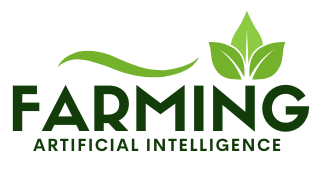
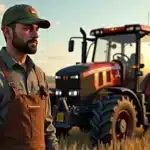
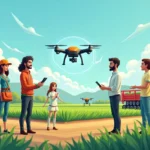
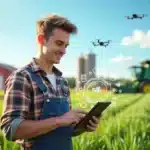

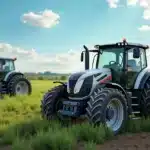

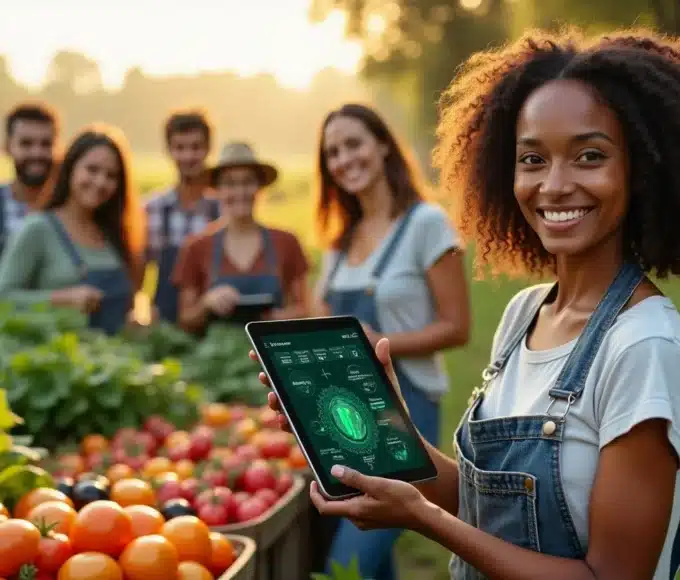
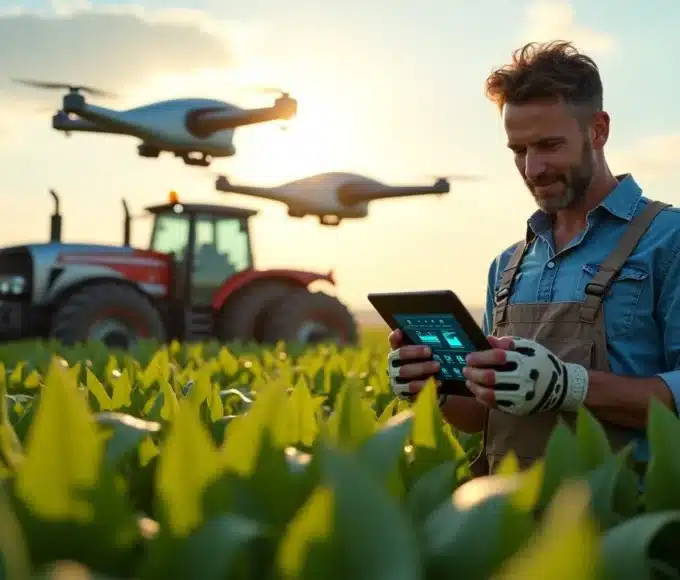
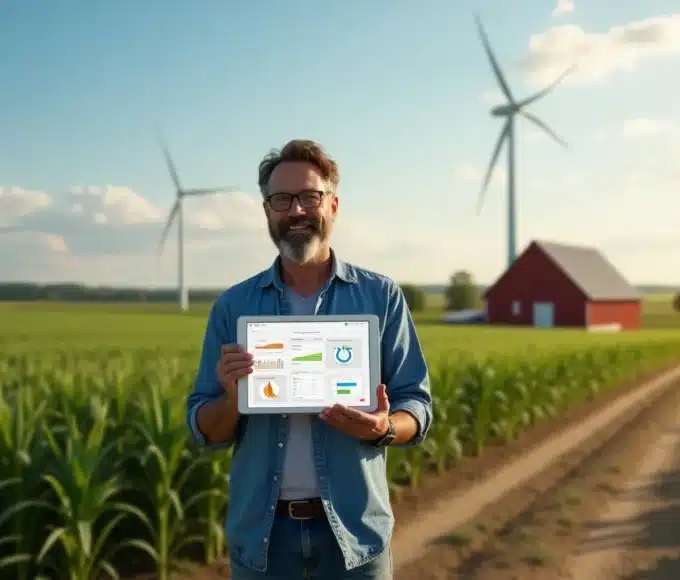
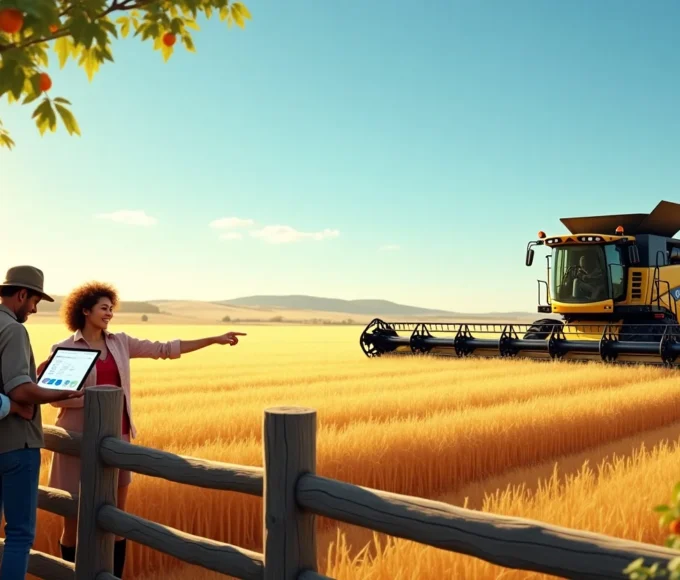
1 Comment